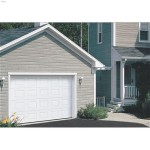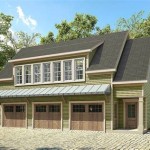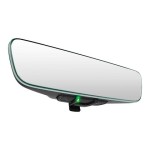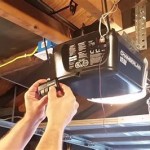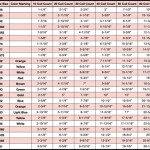How to Tell If a Garage Door Spring Is Broken
Garage doors, while seemingly simple, are complex systems relying on various components working in tandem. Among the most crucial are the garage door springs. These springs provide the necessary counterbalancing force to lift and lower the heavy door with ease. When a garage door spring breaks, it disrupts this balance, potentially rendering the door inoperable and creating a significant safety hazard. Recognizing the signs of a broken garage door spring is vital for ensuring the safety of individuals and property, as well as preventing further damage to the garage door system.
Garage door springs operate under immense tension, bearing the weight of the door each time it opens and closes. Over time, this constant stress leads to wear and tear. Regular use, temperature fluctuations, and lack of proper lubrication can all contribute to shortening the lifespan of the springs. Understanding the types of springs used in garage doors is important for recognizing potential issues. There are primarily two types: torsion springs and extension springs.
Torsion springs are mounted above the garage door opening, winding and unwinding to provide the lifting force. They are generally considered more durable and safer than extension springs. Extension springs, on the other hand, are located along the horizontal tracks above the upper tracks on both sides of the door. They stretch and contract to assist in lifting the door. Because they are under tension, they utilize safety cables to prevent the spring from becoming a projectile if they break.
Identifying a broken garage door spring early can prevent accidents and costly repairs. This article provides a comprehensive guide to recognizing the telltale signs of spring failure.
Visual Inspection of the Springs
The first and often simplest method to determine if a garage door spring is broken is a thorough visual inspection. This should be conducted with caution, ensuring the garage door is closed and no one is operating it during the inspection. Approach the garage door cautiously and carefully examine the springs.
For torsion springs, look for a visible gap or separation in the spring coils. A healthy torsion spring will appear as a tightly wound coil, with no discernible breaks or spaces between the individual rings. A broken torsion spring will exhibit a distinct separation, indicating that the continuous coil has snapped. This visual separation is a clear indication that the spring has failed and requires immediate attention.
When inspecting extension springs, observe their overall condition and position. A broken extension spring may hang loosely or appear significantly elongated compared to the other spring. The spring may be visibly separated into two or more pieces, or it might have come completely detached from its mounting hardware. Moreover, due to the safety cable, it might still appear in its designated place, but a close look will reveal that it is broken.
Pay close attention to the area around the spring mounting hardware and brackets. Look for signs of damage, such as bent or broken brackets, loose bolts, or frayed cables. These issues can also indicate excessive stress on the springs and potentially contribute to their failure. If one spring appears damaged, it’s highly recommended to inspect its counterpart, as they often wear out simultaneously.
Rust and corrosion can weaken the springs and make them more prone to breakage. Check for signs of rust on the coils, especially near any points of stress or friction. If rust is present, consider applying a garage door lubricant to help extend the lifespan of the remaining springs. However, lubrication serves only as a temporary solution; severely rusted springs should be replaced.
Unusual Noises During Operation
A properly functioning garage door operates relatively quietly. If unusual noises, such as loud bangs, snapping sounds, or grinding noises, are heard during the operation of the door, it could indicate a potential spring issue. These noises often arise from the sudden release of tension caused by a broken spring.
A distinct snapping sound, similar to a gunshot, is a common indicator of a broken torsion spring. This sound occurs when the spring suddenly fractures under tension. The sound is often startling and leaves no doubt that something has failed within the garage door system.
Extension springs, when broken, may produce a loud clang or rattle as they snap or come loose from their mounting hardware. This noise will be much louder than the normal squeaking or creaking associated with regular garage door operation. The safety cables might also rattle loudly against the tracks which is another indication of broken spring.
Grinding noises can also signify a problem with the springs. If the door is struggling to open or close, and a grinding sound is heard, it could mean that the remaining spring is under excessive stress and is rubbing against other components of the system. This grinding sound often indicates that the remaining spring is close to failure and requires immediate attention.
If these noises are present, immediately cease operation of the garage door and conduct a thorough inspection of the springs and related hardware. Continuing to operate the door without addressing the issue can lead to further damage and potential hazards.
Difficulty Opening or Closing the Garage Door
A significant indication of a broken garage door spring is difficulty in opening or closing the door. The springs are responsible for counterbalancing the weight of the door, making it easy to lift and lower. When a spring breaks, this balance is disrupted, leading to noticeable differences in the door's operation.
If the garage door feels significantly heavier than usual when manually attempting to open it, it can be an obvious sign of a broken spring. The absence of the spring's assistance means more force is required to lift the door. The change in weight will be immediately apparent to someone accustomed to operating the door.
The door may struggle to open even with the help of the automatic opener. It might only open a few inches before stopping, or it might reverse direction and close immediately. This behavior indicates the opener is straining to lift the door, which is no longer properly balanced. If the opener attempts to lift the door with a broken spring, it may damage or even destroy the opener.
Another sign is an uneven or jerky movement of the door during operation. If one spring is broken, the door will likely be unbalanced and may rise or fall unevenly. This uneven movement puts additional stress on the remaining spring and the opener, further exacerbating the problem. The door might appear to "jump" or "stutter" as it moves along the tracks.
In some cases, the garage door may be completely inoperable. If both springs are broken, or if the remaining spring is unable to handle the door's weight, the door might not move at all. Attempting to force the door open or closed under these circumstances can be dangerous and is strongly discouraged.
If experiencing any of the aforementioned difficulties in opening or closing the garage door, discontinue use immediately and inspect the springs. Attempting to use with broken springs can lead to serious injuries.
Beyond the key indicators described above, there exist further signs suggesting a potential problem with garage door springs. A visibly crooked garage door, where one side hangs lower than the other, signifies an imbalance attributable to spring failure. Furthermore, excessive vibrations noticed during garage door operation or unusual gaps observed between the door and the floor when closed may indicate spring-related issues.
If any of these signs are apparent, the spring should be immediately inspected. If the inspection determines that the garage door spring is broken, it is imperative to cease operation of the door. Replacing garage door springs is a hazardous task best left to qualified professionals. These skilled technicians possess the necessary tools, knowledge and safety equipment to safely remove the broken spring and install a new one. Attempting to replace garage door springs without proper training and equipment can result in serious injury or even death.
When selecting a professional to replace the garage door spring, it is important to verify their credentials, insurance coverage, and experience with similar repairs. A reputable technician will be able to accurately diagnose the problem, recommend the appropriate replacement spring, and perform the repair safely and efficiently. Obtaining multiple quotes from different technicians is recommended to ensure fair pricing and quality service.

How Do I Know If My Garage Door S Torsion Spring Is Broken Smart

How To Fix Broken Spring On Garage Door Youtube

10 Signs Of A Broken Garage Door Spring Champions Repai

Can I Open My Garage Door If The Spring Is Broken Doorvana Doors

Broken Garage Door Springs Easley Spartanburg Sc

Broken Garage Door Spring Here S What To Do Next

Garage Door Spring Guide Safety Tips Warning Signs

How Can I Tell If My Garage Door Spring Is Broken Youtube

How To Spot A Broken Garage Door Spring Effectively

Garage Door Spring Replacement Diy Dangers Discount

